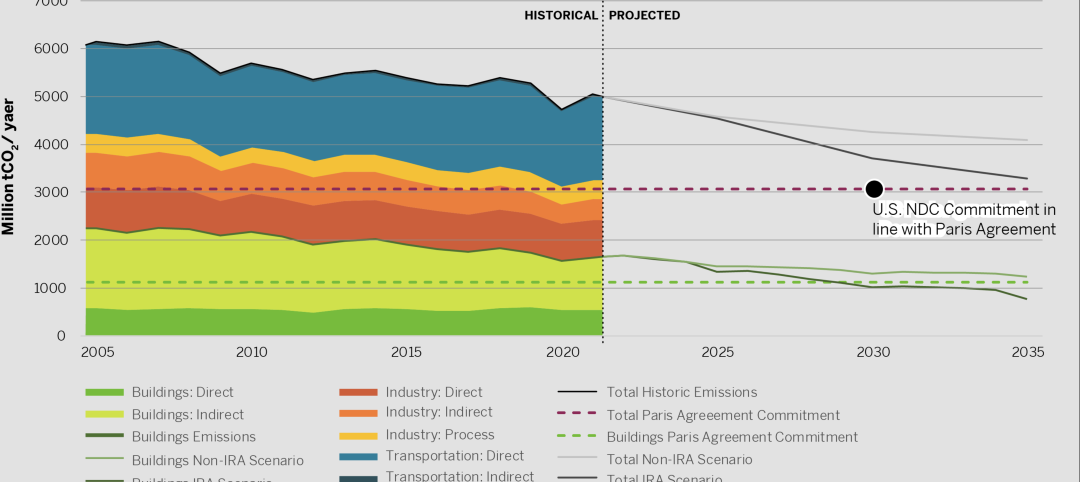Although global hotel deal volume is projected to remain in line with the most recent three-year average in 2013, Jones Lang LaSalle’s Hotels & Hospitality Group believes that signs point to an on-going uptick in Americas hotel transactions activity sooner rather than later. Jones Lang LaSalle revealed five forces which will drive the hotel investment market during the next five years at the Americas Lodging Investment Summit (ALIS) recently at the J.W. Marriott L.A. LIVE.
“There will be a significant amount of property coming to market in 2013 from a combination of the de-leveraging occurring as $55 billion of CMBS matures in the next few years and we’ll see investors who bought earlier in the cycle want their capital gains and they’ll sell,” said Arthur Adler, Americas CEO of Jones Lang LaSalle’s Hotels & Hospitality Group. “You can’t underestimate the composition of hotel ownership over a long period of time as many hotels today are in the hands of traders versus holders.”
Investors should watch the following five key forces and their impact on the hotel market:
1. Boom or bust?: Global deal volume is projected to reach as high as $33 billion this year, in line with the most recent three-year average, and could rise to $50 billion to $70 billion in the medium term. Foreign investors, primarily groups from Asia and the Middle East, have already put $3.2 billion in off-shore capital into hotels in the United States since 2010 and aren’t expected to slow down in the coming years.
2. Hotel transaction level drivers: The United States will account for half the global deal activity as fundamentals remain strong. Improving industry fundamentals, the availability and cost of capital, REIT stock prices, the amount of product on the market and the composition of hotel ownership all have a significant impact on transactions volume and will continue to drive growth.
3. Cash is king, but debt is on its way back: The formidable return of the CMBS market last year improved pricing and terms for borrowers, while drawing other lenders into the hospitality arena. Debt availability should reach a six-year high as domestic and offshore banks, insurance companies, debt funds and mortgage REITs will augment the increased CMBS lending.
4. Increasing the value of a hotel: As top-line revenue rebounds, owners will fight to avoid profit erosion and maintain asset value through increased emphasis on more dynamic and efficient revenue management and analytical tools. Increasing competition for traveler loyalty and third-party travel agents will challenge operators and come at a cost. Hotels will need to invest more in digital marketing efforts and leverage the use of online travel agencies as part of a diversified distribution channel strategy.
5. Let the games begin in Latin America: Economies in Latin America are expected to grow by four percent annually through 2020 and the region’s share of global GDP is slated to increase by 25 percent from 2000 to 2020. Economic reforms, growth in income per capita stemming from increased economic decentralization in several key markets and events such as the 2014 FIFA Soccer World Cup and Summer Olympic Games in Brazil will make the region attractive for growth in the lodging sector. Brazil, Mexico, Colombia, Peru and Chile will be at the forefront of the increase.
As operating fundamentals remain strong, hotels should remain a favored asset class globally among lenders, institutional and offshore investors. With debt simultaneously becoming more available and competitively priced, asset values and transaction volume should continue to rise.
About Jones Lang LaSalle's Hotels & Hospitality Group
Jones Lang LaSalle’s Hotels & Hospitality Group serves as the hospitality industry’s global leader in real estate services for luxury, upscale, select service and budget hotels; timeshare and fractional ownership properties; convention centers; mixed-use developments and other hospitality properties. The firm’s more than 265 dedicated hotel and hospitality experts partner with investors and owner/operators around the globe to support and shape investment strategies that deliver maximum value throughout the entire lifecycle of an asset. In the last five years, the team completed more transactions than any other hotels and hospitality real estate advisor in the world totaling nearly US$25 billion, while also completing approximately 4,000 advisory and valuation assignments. The group’s hotels and hospitality specialists provide independent and expert advice to clients, backed by industry-leading research.
For more news, videos and research from Jones Lang LaSalle’s Hotels & Hospitality Group, please visit: www.jll.com/hospitality or download the Hotels & Hospitality Group’s app from the App Store.
About Jones Lang LaSalle
Jones Lang LaSalle (NYSE:JLL) is a professional services and investment management firm offering specialized real estate services to clients seeking increased value by owning, occupying and investing in real estate. With annual revenue of $3.9 billion, Jones Lang LaSalle operates in 70 countries from more than 1,000 locations worldwide. On behalf of its clients, the firm provides management and real estate outsourcing services to a property portfolio of 2.6 billion square feet. Its investment management business, LaSalle Investment Management, has $47.0 billion of real estate assets under management. For further information, visit www.jll.com.
Related Stories
Healthcare Facilities | Dec 19, 2023
A new hospital in Duluth, Minn., is now the region’s largest healthcare facility
In Duluth, Minn., the new St. Mary’s Medical Center, designed by EwingCole, is now the largest healthcare facility in the region. The hospital consolidates Essentia Health’s healthcare services under one roof. At about 1 million sf spanning two city blocks, St. Mary’s overlooks Lake Superior, providing views on almost every floor of the world’s largest freshwater lake.
Government Buildings | Dec 19, 2023
New Pennsylvania State Archives building holds documents dating back to 1680
Work was recently completed on a new Pennsylvania State Archives building in Harrisburg, Penn. The HGA-designed, 146,000-sf facility offers numerous amenities, including computers, scanners, printers, a kitchenette with seating, lockers, a meeting room, a classroom, an interactive video wall, gallery, and all-gender restrooms. The features are all intended to provide a welcoming and comfortable environment for visitors.
MFPRO+ News | Dec 18, 2023
Berkeley, Calif., raises building height limits in downtown area
Facing a severe housing shortage, the City of Berkeley, Calif., increased the height limits on residential buildings to 12 stories in the area close to the University of California campus.
Green | Dec 18, 2023
Class B commercial properties gain more from LEED certification than Class A buildings
Class B office properties that are LEED certified command a greater relative benefit than LEED-certified Class A buildings, according to analysis from CBRE. The Class B LEED rent advantage over non-LEED is about three times larger than the premium earned by Class A LEED buildings.
Codes and Standards | Dec 18, 2023
ASHRAE releases guide on grid interactivity in the decarbonization process
A guide focusing on the critical role of grid interactivity in building decarbonization was recently published by ASHRAE. The Grid-Interactive Buildings for Decarbonization: Design and Operation Resource Guide provides information on maximizing carbon reduction through buildings’ interaction with the electric power grid.
Architects | Dec 18, 2023
Perkins&Will’s new PRECEDE tool provides access to public health data to inform design decisions
Perkins&Will recently launched a free digital resource that allows architects and designers to access key public health data to inform design decisions. The “Public Repository to Engage Community and Enhance Design Equity,” or PRECEDE, centralizes demographic, environmental, and health data from across the U.S. into a geospatial database.
75 Top Building Products | Dec 13, 2023
75 top building products for 2023
From a bladeless rooftop wind energy system, to a troffer light fixture with built-in continuous visible light disinfection, innovation is plentiful in Building Design+Construction's annual 75 Top Products report.
Codes and Standards | Dec 11, 2023
Washington state tries new approach to phase out fossil fuels in new construction
After pausing a heat pump mandate earlier this year after a federal court overturned Berkeley, Calif.’s ban on gas appliances in new buildings, Washington state enacted a new code provision that seems poised to achieve the same goal.
Green | Dec 11, 2023
U.S. has tools to meet commercial building sector decarbonization goals early
The U.S. has the tools to reduce commercial building-related emissions to reach target goals in 2029, earlier than what it committed to when it signed the Paris Agreement, according to a report by the U.S. Green Building Council.
Office Buildings | Dec 11, 2023
Believe it or not, there could be a shortage of office space in the years ahead
With work-from-home firmly established, many real estate analysts predict a dramatic reduction in office space leasing and plummeting property values. But the high-end of the office segment might actually be headed for a shortage, according to real estate intelligence company CoStar Group.

















